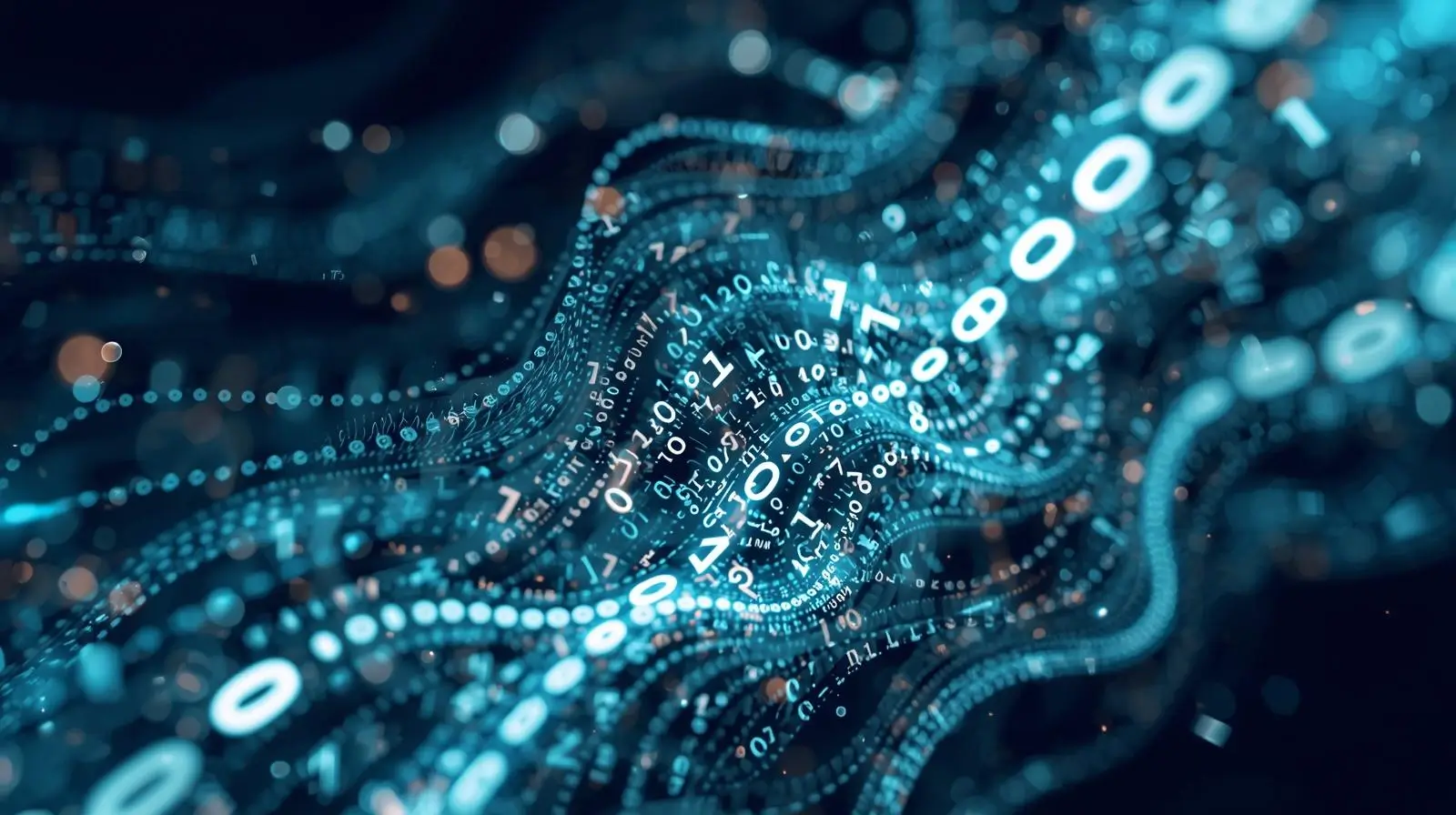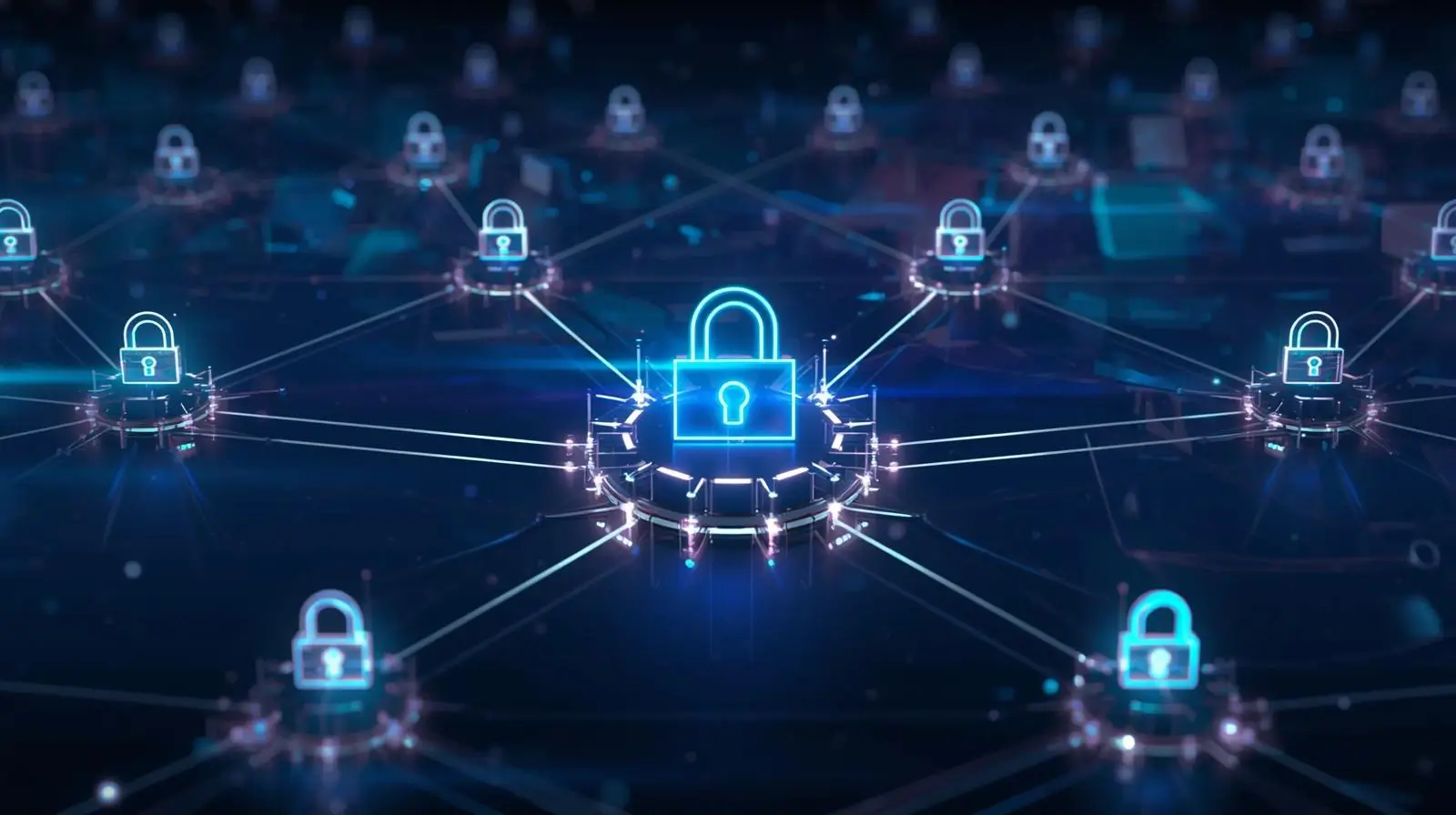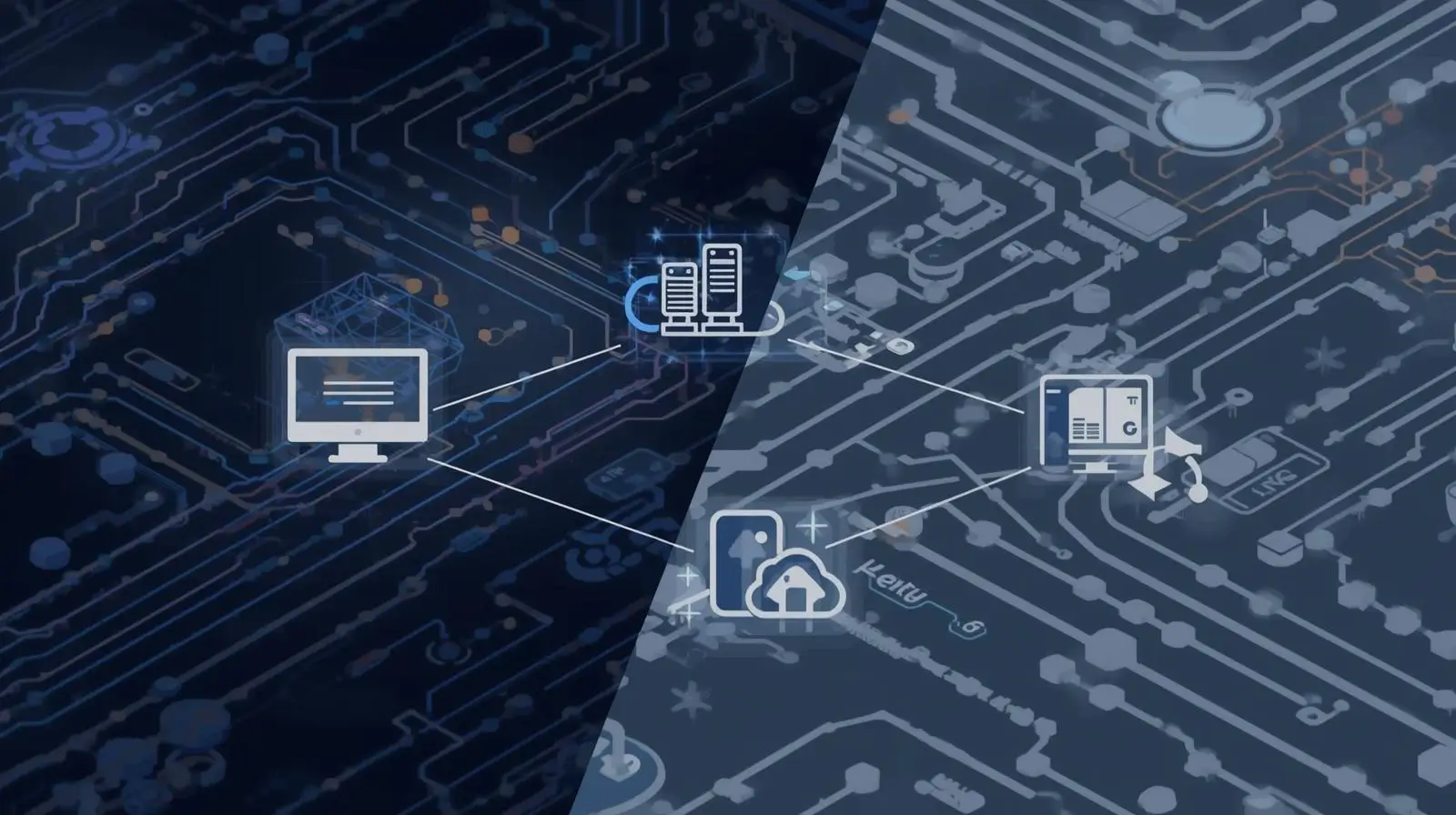Have you ever wondered how computers store, process, and transmit text, emojis, or even entire documents? Computers don't understand letters or symbols like humans do—they rely on encoding standards to translate human-readable text into binary data (zeros and ones) that they can process. In this detailed guide, we'll explore the most common encoding methods, including how they work, their use cases, and step-by-step examples of how text is converted to binary or other formats. Whether you're a beginner or a tech enthusiast, this guide will help you understand encoding in a friendly and approachable way.
What is Text Encoding?
Text encoding is the process of converting human-readable characters (like letters, numbers, or emojis) into a format that computers can understand—typically binary (0s and 1s). Each encoding standard has its own rules for mapping characters to numbers and then to binary. Choosing the right encoding is crucial for ensuring that text displays correctly across systems, websites, and applications.
Let's dive into the most common encoding methods: ASCII, Extended ASCII, UTF-8, UTF-16, UTF-32, Base64, and URL Encoding. We'll cover how they convert text to binary or other formats and when to use each one, with detailed example explanations.
1. ASCII: The Grandfather of Text Encoding
What It Is
ASCII (American Standard Code for Information Interchange), developed in the 1960s, is the oldest and simplest encoding standard. It's designed to represent basic English letters, numbers, and symbols using a compact 7-bit binary format.
How It Works
- Each character is assigned a number between 0 and 127 (128 total characters).
- These numbers are represented as 7-bit binary values, though modern systems often pad them to 8 bits (adding a leading 0) for compatibility.
- ASCII includes:
- Uppercase and lowercase English letters (A–Z, a–z)
- Numbers (0–9)
- Common symbols (e.g., !, @, #, $, etc.)
- Control characters (e.g., newline, tab)
Limitations
- Only supports basic English characters.
- No support for accented letters (e.g., é, ñ), non-Latin scripts (e.g., Chinese, Arabic), or emojis.
Example: Converting 'A' and '!' to ASCII (Click to expand)
| Character | ASCII Code | Binary (7-bit) | Binary (8-bit, padded) |
|---|---|---|---|
| A | 65 | 1000001 | 01000001 |
| ! | 33 | 0100001 | 00100001 |
Detailed Explanation for 'A':
- Find the ASCII Code: The character 'A' is assigned the decimal value 65 in the ASCII table.
- Convert to Binary: The decimal number 65 is converted to binary:
- Divide 65 by 2 repeatedly, noting remainders:
- 65 ÷ 2 = 32 remainder 1
- 32 ÷ 2 = 16 remainder 0
- 16 ÷ 2 = 8 remainder 0
- 8 ÷ 2 = 4 remainder 0
- 4 ÷ 2 = 2 remainder 0
- 2 ÷ 2 = 1 remainder 0
- 1 ÷ 2 = 0 remainder 1
- Read remainders bottom-up: 1000001 (7 bits).
- Pad to 8 Bits: Modern systems use 8-bit bytes, so add a leading 0: 01000001.
- Result: The character 'A' is stored as 01000001 in binary.
Detailed Explanation for '!':
- Find the ASCII Code: The character '!' is assigned the decimal value 33 in the ASCII table.
- Convert to Binary: The decimal number 33 is converted to binary:
- 33 ÷ 2 = 16 remainder 1
- 16 ÷ 2 = 8 remainder 0
- 8 ÷ 2 = 4 remainder 0
- 4 ÷ 2 = 2 remainder 0
- 2 ÷ 2 = 1 remainder 0
- 1 ÷ 2 = 0 remainder 1
- Read remainders bottom-up: 0100001 (7 bits).
- Pad to 8 Bits: Add a leading 0: 00100001.
- Result: The character '!' is stored as 00100001 in binary.
Best For
- Legacy systems or applications that only need basic English text.
- Simple protocols where efficiency is key.
2. Extended ASCII: A Slight Upgrade
What It Is
Extended ASCII builds on ASCII by using the full 8 bits (1 byte) to represent up to 256 characters (0–255). This allows for additional symbols like accented letters (é, ñ) and special characters (©, ™).
How It Works
- Uses numbers 128–255 for extra characters beyond the standard ASCII set.
- Different systems (e.g., Windows-1252, ISO-8859-1) may assign different characters to these numbers, leading to inconsistencies.
Limitations
- Not standardized across platforms, so the same code (e.g., 130) might display differently on Windows vs. Mac.
- Still limited compared to modern encodings like UTF-8.
Example: Converting 'é' and '©' to Extended ASCII (Click to expand)
| Character | Extended ASCII Code | Binary (8-bit) |
|---|---|---|
| é | 130 (Windows-1252) | 10000010 |
| © | 169 | 10101001 |
Detailed Explanation for 'é' (Windows-1252):
- Find the Extended ASCII Code: In the Windows-1252 code page, the character 'é' is assigned the decimal value 130.
- Convert to Binary: The decimal number 130 is converted to binary:
- 130 ÷ 2 = 65 remainder 0
- 65 ÷ 2 = 32 remainder 1
- 32 ÷ 2 = 16 remainder 0
- 16 ÷ 2 = 8 remainder 0
- 8 ÷ 2 = 4 remainder 0
- 4 ÷ 2 = 2 remainder 0
- 2 ÷ 2 = 1 remainder 0
- 1 ÷ 2 = 0 remainder 1
- Read remainders bottom-up: 10000010 (8 bits).
- Result: The character 'é' is stored as 10000010 in binary.
- Note: In a different code page (e.g., ISO-8859-1), 'é' might have a different code, which can cause display issues.
Detailed Explanation for '©':
- Find the Extended ASCII Code: The character '©' is assigned the decimal value 169 in Windows-1252.
- Convert to Binary: The decimal number 169 is converted to binary:
- 169 ÷ 2 = 84 remainder 1
- 84 ÷ 2 = 42 remainder 0
- 42 ÷ 2 = 21 remainder 0
- 21 ÷ 2 = 10 remainder 1
- 10 ÷ 2 = 5 remainder 0
- 5 ÷ 2 = 2 remainder 1
- 2 ÷ 2 = 1 remainder 0
- 1 ÷ 2 = 0 remainder 1
- Read remainders bottom-up: 10101001 (8 bits).
- Result: The character '©' is stored as 10101001 in binary.
Best For
- Systems needing slightly more than basic ASCII but not full Unicode support.
- Legacy applications with limited character sets.
3. UTF-8: The Universal Language of the Web
What It Is
UTF-8 (Unicode Transformation Format, 8-bit) is the most widely used encoding standard today. It supports all languages and symbols in the Unicode standard, including emojis, making it ideal for global applications.
How It Works
- UTF-8 is variable-length, using 1 to 4 bytes per character based on complexity:
- English letters (ASCII characters): 1 byte (compatible with ASCII).
- European accented letters (e.g., é, ñ): 2 bytes.
- Asian characters (e.g., Chinese, Japanese): 3 bytes.
- Emojis and rare symbols: 4 bytes.
- Each byte in a multi-byte sequence starts with specific bits to indicate how many bytes follow.
Binary Conversion
UTF-8 encodes characters into binary using these patterns:
- 1-byte: 0xxxxxxx (0–127, ASCII-compatible).
- 2-byte: 110xxxxx 10xxxxxx (128–2047).
- 3-byte: 1110xxxx 10xxxxxx 10xxxxxx (2048–65535).
- 4-byte: 11110xxx 10xxxxxx 10xxxxxx 10xxxxxx (65536–1114111).
Example: Converting 'A', '€', and '😊' to UTF-8 (Click to expand)
| Character | Unicode Code Point | UTF-8 Hex | UTF-8 Binary |
|---|---|---|---|
| A | U+0041 | 41 | 01000001 |
| € | U+20AC | E2 82 AC | 11100010 10000010 10101100 |
| 😊 | U+1F60A | F0 9F 98 8A | 11110000 10011111 10011000 10001010 |
Detailed Explanation for 'A':
- Find the Unicode Code Point: The character 'A' has the Unicode code point U+0041 (decimal 65).
- Determine Bytes Needed: Since 65 is less than 128, UTF-8 uses 1 byte (ASCII-compatible).
- Convert to Binary: The decimal 65 is 01000001 (same as ASCII).
- Result: 'A' is encoded as 41 (hex) or 01000001 (binary).
Detailed Explanation for '€':
- Find the Unicode Code Point: The Euro symbol '€' has the Unicode code point U+20AC (decimal 8364).
- Determine Bytes Needed: Since 8364 is between 2048 and 65535, UTF-8 uses 3 bytes.
- Convert to Binary: Convert 8364 to binary: 10000010101100.
- Apply UTF-8 Pattern: For 3 bytes (1110xxxx 10xxxxxx 10xxxxxx):
- Split 10000010101100 into groups: 0010 (4 bits), 000010 (6 bits), 101100 (6 bits).
- First byte: 1110 + 0010 = 11100010.
- Second byte: 10 + 000010 = 10000010.
- Third byte: 10 + 101100 = 10101100.
- Convert to Hex: Binary 11100010 10000010 10101100 = Hex E2 82 AC.
- Result: '€' is encoded as E2 82 AC (hex) or 11100010 10000010 10101100 (binary).
Detailed Explanation for '😊':
- Find the Unicode Code Point: The emoji '😊' has the Unicode code point U+1F60A (decimal 128522).
- Determine Bytes Needed: Since 128522 is between 65536 and 1114111, UTF-8 uses 4 bytes.
- Convert to Binary: Convert 128522 to binary: 11111011000001010.
- Apply UTF-8 Pattern: For 4 bytes (11110xxx 10xxxxxx 10xxxxxx 10xxxxxx):
- Split 11111011000001010 into groups: 0001 (3 bits), 111101 (6 bits), 100000 (6 bits), 001010 (6 bits).
- First byte: 11110 + 0001 = 11110000.
- Second byte: 10 + 111101 = 10011111.
- Third byte: 10 + 100000 = 10011000.
- Fourth byte: 10 + 001010 = 10001010.
- Convert to Hex: Binary 11110000 10011111 10011000 10001010 = Hex F0 9F 98 8A.
- Result: '😊' is encoded as F0 9F 98 8A (hex) or 11110000 10011111 10011000 10001010 (binary).
Why It's Awesome
- Universal: Supports every language and emoji in Unicode.
- Efficient: Uses fewer bytes for common characters (e.g., English letters).
- Backward-compatible: ASCII text is valid UTF-8.
- Web standard: Used by websites, databases, and APIs.
Best For
- Websites, apps, databases, emails, and programming.
- Any system requiring global text support.
4. Base64: Turning Binary into Text
What It Is
Base64 is an encoding method that converts binary data (e.g., images, files, or text) into a text string using a set of 64 printable ASCII characters (A–Z, a–z, 0–9, +, /).
How It Works
- Takes binary data and groups it into 6-bit chunks.
- Each 6-bit chunk is mapped to one of 64 characters from the Base64 alphabet.
- Adds padding with = if the input length isn't divisible by 3 bytes.
Binary Conversion
- Input text is first converted to its ASCII binary form.
- The binary is divided into 6-bit groups, each mapped to a Base64 character.
Example: Encoding "hello" to Base64 (Click to expand)
| Input | ASCII Binary | Base64 Output |
|---|---|---|
| hello | 01101000 01100101 01101100 01101100 01101111 | aGVsbG8= |
Detailed Explanation for "hello":
- Convert to ASCII:
- h: ASCII 104 → Binary 01101000
- e: ASCII 101 → Binary 01100101
- l: ASCII 108 → Binary 01101100
- l: ASCII 108 → Binary 01101100
- o: ASCII 111 → Binary 01101111
- Concatenate: 01101000 01100101 01101100 01101100 01101111 (40 bits).
- Group into 6-Bit Chunks:
- Split 40 bits into 6-bit groups: 011010 000110 010101 101100 011011 000110 1111.
- Pad with 2 zeros to make the last group 6 bits: 111100.
- Resulting groups: 011010, 000110, 010101, 101100, 011011, 000110, 111100.
- Map to Base64 Characters:
- Base64 alphabet: A=0, B=1, ..., Z=25, a=26, b=27, ..., z=51, 0=52, ..., 9=61, +=62, /=63.
- 011010 = 26 → a
- 000110 = 6 → G
- 010101 = 21 → V
- 101100 = 44 → s
- 011011 = 27 → b
- 000110 = 6 → G
- 111100 = 60 → 8
- Add Padding: Since the input (5 bytes) isn't divisible by 3, add one = for padding.
- Result: "hello" is encoded as aGVsbG8=.
Why It's Useful
- Converts binary data (e.g., images, files) into text that's safe for text-only systems like email, JSON, or URLs.
- Commonly used to embed images in HTML/CSS or send attachments in emails.
Downside
- Increases data size by ~33% due to the 6-bit-to-8-bit conversion.
Best For
- Embedding binary data in text formats (e.g., JSON, HTML, email).
- APIs and systems that require text-safe binary transmission.
5. URL Encoding: Making Links Safe
What It Is
URL Encoding (also called percent-encoding) is used to make URLs safe by replacing special characters with a % followed by their two-digit hexadecimal ASCII code.
How It Works
- Replaces characters that have special meaning in URLs (e.g., spaces, ?, &, #) with %XX, where XX is the hex value of the character's ASCII code.
- Safe characters (e.g., A–Z, a–z, 0–9, -, _, ., ~) are left unchanged.
Example: Encoding "Hello World!" to URL Encoding (Click to expand)
| Character | ASCII Code | Hex | URL-Encoded |
|---|---|---|---|
| Space | 32 | 20 | %20 |
| ? | 63 | 3F | %3F |
| ! | 33 | 21 | %21 |
Detailed Explanation for "Hello World!":
- Break Down the String: The string "Hello World!" contains:
- Safe characters: H, e, l, l, o, W, o, r, l, d (left unchanged).
- Special characters: Space, ! (need encoding).
- Encode the Space:
- ASCII Code: Space = 32.
- Convert to Hex: 32 = 20 (since 2×16 + 0 = 32).
- URL-Encoded: %20.
- Binary (ASCII): 32 = 00100000.
- Encode the '!':
- ASCII Code: ! = 33.
- Convert to Hex: 33 = 21 (since 2×16 + 1 = 33).
- URL-Encoded: %21.
- Binary (ASCII): 33 = 00100001.
- Combine: "Hello World!" becomes Hello%20World%21.
- Result: The string is encoded as Hello%20World%21.
Best For
- Web URLs, API requests, and form submissions.
- Ensuring special characters don't break web links.
6. UTF-16 & UTF-32: The Heavyweight Encodings
UTF-16: Used in Windows & Java
What It Is
UTF-16 is a Unicode encoding that uses 2 bytes (16 bits) for most characters and 4 bytes for rare ones (e.g., emojis).
How It Works
- Most characters (Unicode code points U+0000 to U+FFFF) use 2 bytes.
- Rare characters (U+10000 to U+10FFFF) use surrogate pairs (4 bytes).
- Includes a Byte Order Mark (BOM) to indicate byte order (big-endian or little-endian).
Example: Converting 'A' and '😊' to UTF-16 (Click to expand)
| Character | Unicode Code Point | UTF-16 Hex | UTF-16 Binary |
|---|---|---|---|
| A | U+0041 | 0041 | 00000000 01000001 |
| 😊 | U+1F60A | D83D DE0A | 11011000 00111101 11011110 00001010 |
Detailed Explanation for 'A':
- Find the Unicode Code Point: 'A' is U+0041 (decimal 65).
- Determine Bytes Needed: Since 65 is less than 65535, UTF-16 uses 2 bytes.
- Convert to Binary: 65 = 01000001. In UTF-16, use 2 bytes: 00000000 01000001.
- Convert to Hex: Binary 00000000 01000001 = Hex 0041.
- Result: 'A' is encoded as 0041 (hex) or 00000000 01000001 (binary).
Detailed Explanation for '😊':
- Find the Unicode Code Point: '😊' is U+1F60A (decimal 128522).
- Determine Bytes Needed: Since 128522 is greater than 65535, UTF-16 uses a surrogate pair (4 bytes).
- Calculate Surrogate Pair:
- Subtract 0x10000 from 0x1F60A: 128522 - 65536 = 62986.
- Split into high and low surrogates:
- High surrogate: 0xD800 + (62986 >> 10) = 0xD83D.
- Low surrogate: 0xDC00 + (62986 & 0x3FF) = 0xDE0A.
- Convert to Binary:
- High surrogate D83D = 11011000 00111101.
- Low surrogate DE0A = 11011110 00001010.
- Result: '😊' is encoded as D83D DE0A (hex) or 11011000 00111101 11011110 00001010 (binary).
Best For
- Windows applications, Java, and JavaScript.
- Systems where Asian languages (which often use 2 bytes) are common.
UTF-32: The Fixed-Width Encoding
What It Is
UTF-32 uses 4 bytes for every character, making it simple but inefficient.
How It Works
- Every Unicode code point is stored as a fixed 4-byte value.
- No variable-length encoding, so it's straightforward but wastes space for common characters.
Example: Converting 'A' and '😊' to UTF-32 (Click to expand)
| Character | Unicode Code Point | UTF-32 Hex | UTF-32 Binary |
|---|---|---|---|
| A | U+0041 | 00000041 | 00000000 00000000 00000000 01000001 |
| 😊 | U+1F60A | 0001F60A | 00000000 00000001 11110110 00001010 |
Detailed Explanation for 'A':
- Find the Unicode Code Point: 'A' is U+0041 (decimal 65).
- Determine Bytes Needed: UTF-32 always uses 4 bytes.
- Convert to Binary: 65 = 01000001. Pad with leading zeros to fill 4 bytes: 00000000 00000000 00000000 01000001.
- Convert to Hex: Binary 00000000 00000000 00000000 01000001 = Hex 00000041.
- Result: 'A' is encoded as 00000041 (hex) or 00000000 00000000 00000000 01000001 (binary).
Detailed Explanation for '😊':
- Find the Unicode Code Point: '😊' is U+1F60A (decimal 128522).
- Determine Bytes Needed: UTF-32 uses 4 bytes.
- Convert to Binary: 128522 = 11111011000001010. Pad with leading zeros: 00000000 00000001 11110110 00001010.
- Convert to Hex: Binary 00000000 00000001 11110110 00001010 = Hex 0001F60A.
- Result: '😊' is encoded as 0001F60A (hex) or 00000000 00000001 11110110 00001010 (binary).
Best For
- Specialized text-processing systems needing fixed-width characters.
- Rarely used due to inefficiency.
Byte Order Mark (BOM): A Quick Note
- A BOM is a special Unicode character (U+FEFF) placed at the start of a file to indicate the encoding and byte order (big-endian or little-endian).
- Common in UTF-16 and UTF-32, optional in UTF-8.
- Example:
- UTF-8 BOM: EF BB BF (3 bytes).
- UTF-16 BOM: FE FF (big-endian) or FF FE (little-endian).
- Use Case: Helps software identify the encoding of a file, but can cause issues if not expected.
Detailed Explanation for UTF-8 BOM (Click to expand)
- Unicode Code Point: U+FEFF.
- UTF-8 Encoding: In UTF-8, U+FEFF is encoded as a 3-byte sequence:
- Code point 65279 (decimal) = Binary 1111111011111111.
- 3-byte pattern: 1110xxxx 10xxxxxx 10xxxxxx.
- Split: 1111 (4 bits), 111011 (6 bits), 111111 (6 bits).
- First byte: 11101111 = EF.
- Second byte: 10111101 = BB.
- Third byte: 10111111 = BF.
- Result: UTF-8 BOM is EF BB BF (hex).
Comparison of Encodings
| Encoding | Best For | Efficiency | Supports Unicode? |
|---|---|---|---|
| ASCII | Legacy English systems | ⭐⭐⭐ Very efficient (1 byte) | ❌ No |
| Extended ASCII | Legacy with limited symbols | ⭐⭐ Good (1 byte) | ❌ No |
| UTF-8 | Web, apps, global use | ⭐⭐⭐ Best for mixed text | ✅ Yes |
| UTF-16 | Windows, Java, Asian languages | ⭐⭐ Good for Asian text | ✅ Yes |
| UTF-32 | Rare, fixed-width needs | ❌ Very inefficient (4 bytes) | ✅ Yes |
| Base64 | Binary-to-text conversion | ❌ Increases size by ~33% | N/A (binary) |
| URL Encoding | Web URLs, APIs | ⭐⭐ Good for URLs | N/A (specific use) |
Which Encoding Should You Use?
- Websites, apps, or databases? → UTF-8 (universal, efficient, web standard).
- Windows or Java programs? → UTF-16 (optimized for certain systems).
- URLs or API requests? → URL Encoding (ensures safe links).
- Images or files in emails/JSON? → Base64 (converts binary to text).
- Legacy English-only systems? → ASCII (simple but limited).
- Fixed-width processing? → UTF-32 (rare, only for specific needs).
Final Thought
Text encoding is like a translator between human languages and the binary world of computers. By understanding how ASCII, UTF-8, Base64, and others work, you can choose the right encoding for your project and avoid common pitfalls like garbled text or broken links. Whether you're building a website, sending an email, or embedding an image, encoding ensures your data is understood correctly.
🚀 Want to dive deeper? Ask about specific encoding challenges, binary file formats, or how to handle encoding errors in programming!
Share this article
Test Your Knowledge
Ready to put what you've learned to the test? Take our interactive quiz and see how well you understand the concepts covered in this article.




Loading comments...